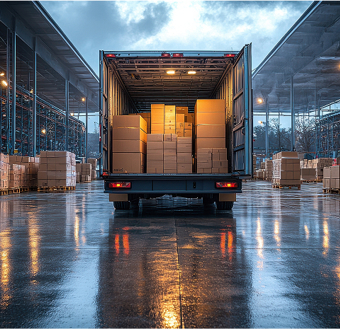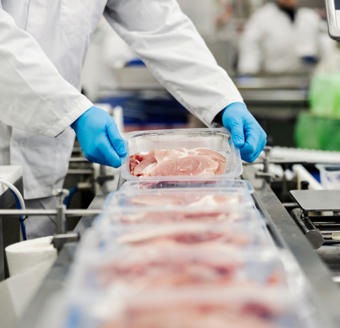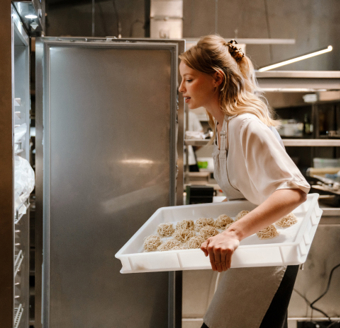Let’s look first at the cold chain
A “cold chain” refers to a temperature-controlled supply chain, where perishable products such as food, are kept within specific temperature ranges from production to consumption to ensure quality and safety.
When it comes to food safety, effective cold chain monitoring is vital because improper handling and temperature fluctuations can lead to food spoilage, contamination, and significant health risks.
Take for example a food product like a bag of frozen peas. It must be grown, processed, packaged, stored, transported and then sold. This supply chain may be the responsibility of one company, from end to end, or more likely it will involve several different companies.
Whether it’s one company or many, they share the same fundamental challenge. They must make sure that at every stage of the chain the product is kept at an appropriate, safe, temperature. Ensuring the correct temperature controls throughout the cold chain can preserve foods shelf life and reduce waste.
Farm stage: harvesting and initial cooling
Pre-cooling is a very important step in the post-harvest stage of the perishable produce industry. Pre-cooling means quickly removing the heat from freshly harvested fruits and vegetables to reduce the loss in quality once it’s been picked. Likewise, pre-cooling increases the shelf-life of fresh produce. Higher quality and longer shelf-life ultimately mean more profits go to produce growers.
Not only is pre-cooling important once the produce has been initially picked, but temperature control in post-harvest is essential to prevent the growth of harmful microorganisms. Inadequate temperatures can accelerate the ripening and decomposition of fruits and vegetables, which reduces their shelf life and nutritional value.
Humidity is another critical factor to consider in the management of fresh products. Excessive humidity can lead to the increased presence of fungi and mould, while insufficient humidity can cause dehydration and loss of quality.
Temperature and humidity control in post-harvest are essential to ensure the quality and safety of fresh products. Proper management of these factors contributes not only to reducing food waste but also to preserving the nutrients and flavour of the products.
Monitoring solution example:
Temperature monitoring involves deploying technologies that are capable of tracking, in real time the temperatures of such products while they are in transit. Temperature sensors in storage facilities or trucks ensure the produce is quickly cooled to the optimal temperature range.
Next up, processing and packaging: maintaining stability during preparation






